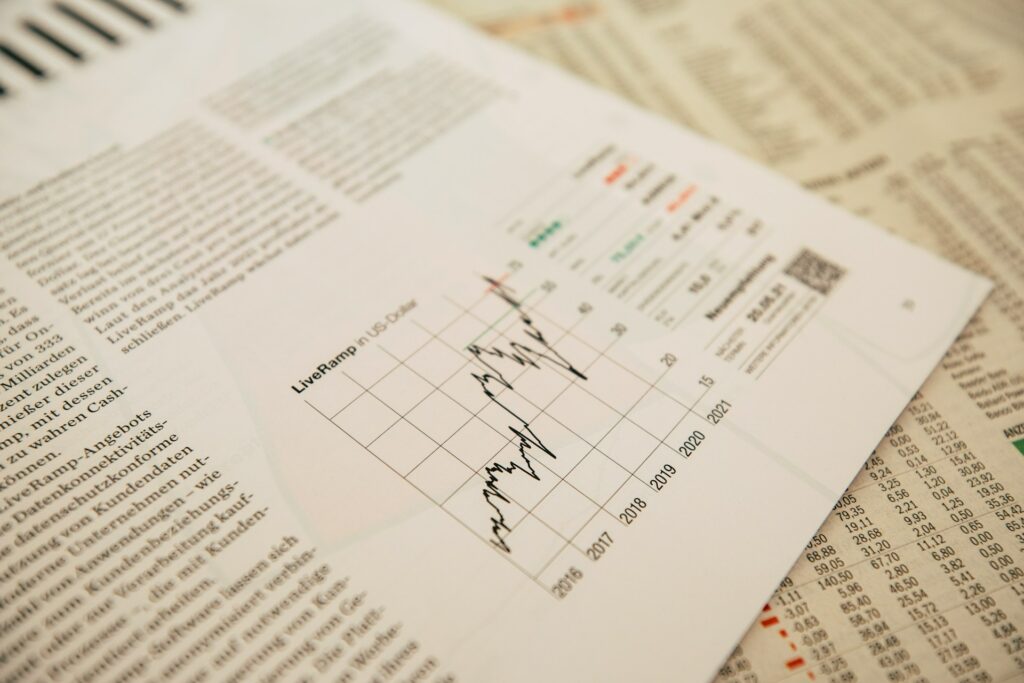Index funds are the simplest and most cost-effective way to invest. They don’t require a lot of research or management over time, so you can keep your costs down. Index funds also track the performance of their respective market benchmarks more closely than actively managed funds, which means you’ll get more bang for your buck.
However, not all index funds are created equal: some have higher expense ratios than others. And as with any investment, it’s important to compare fees before making any decisions about which ones to buy or sell. That’s why I’m going over some of the reasons why high expense ratio index funds can hurt your returns over time – plus what steps you can take to avoid them!
Expense ratios can vary dramatically.

When it comes to investing, there are two main types of funds: index funds and actively managed funds. Index funds invest in a basket of stocks that is intended to match the performance of a particular market benchmark. Actively managed funds have at least one professional investor who picks individual stocks based on their own research and analysis.
In general, low-cost index funds tend to outperform high-cost actively managed ones over long periods of time. But there is another reason why you might want to avoid high expense ratio index funds: they can vary dramatically in price!
Expense ratios can vary from as low as 0.05% (which is less than $5 per $10,000 invested) all the way up over 3%. This means that if you invest $10k into an S&P 500 fund with an expense ratio of 1%, you’ll pay about $100 per year for its management—as compared with a similar fund with an expense ratio of 0.02%, which would only cost about $20 per year for its management charge (and probably not much more than that).
High expense ratio index funds can be a major drag on returns over time.

You may have heard that a fund’s expense ratio is the percentage of assets it charges for managing your money. While this is true, expense ratios can be a major drag on returns over time.
For example, let’s say you invest $10,000 in an index fund with an annual management fee of 1%. Based on historical data, the average return on such an investment would be 7%, so you should earn $710 per year before taxes if you’re in the 25% tax bracket (or $740 after tax). That’s not bad at all!
Now let’s say we add another layer: You also invest another $10k elsewhere with a different firm that charges exactly twice as much for its management services (2%). That translates into only 6% expected returns each year rather than 7%. Over 40 years of investing—a typical retirement time horizon—you’ll end up with about $60k less than if you’d just paid 1%.
Larger companies have scale advantages that allow them to charge lower fees.

Larger companies have scale advantages that allow them to charge lower fees. Smaller companies don’t have the same scale advantages, and as a result, they’re likely to charge higher fees. The larger the company (and therefore asset base), the more it can spread its costs across its assets.
This is why mutual fund companies offer different funds: some are designed for large investors who want to invest in large-cap stocks; others are designed for small investors looking to invest in small-cap stocks. It’s also why index investing works so well—because it reduces investment costs by allowing you to invest in thousands of securities at once with just one transaction instead of having to buy each security separately
Lower-cost funds are available in nearly every category.

The good news is that low-cost funds are available in nearly every category. For example, Vanguard’s Total Stock Market ETF (VTI) has an expense ratio of 0.05%, which is about one-sixth of the expense ratio of Vanguard’s Admiral Shares version of the index fund (VTSAX). Similarly, iShares Core S&P 500 ETF (IVV) has an expense ratio of 0.04%.
In addition to lower expenses, these funds may also carry slightly higher minimum initial investment requirements than their high-cost counterparts. This can be a small price to pay for significantly lower fees and greater diversification within your portfolio!
Lower-cost funds are available in most categories.

Lower-cost index funds are available in most categories. Lower expenses mean higher returns for you, and lower costs allow the fund managers to buy more shares of each stock. This means that over time you’ll earn a higher return on your investment.
In some asset classes, it’s easier to find low-cost index funds than in others. For example, there are plenty of options for bond indexes with expense ratios below 0.1 percent (the average expense ratio for bond funds is about 0.4 percent). However, when it comes to international stocks and REITs (real estate investment trusts), there aren’t as many options with fees below 0.2%. These two asset classes tend to be more expensive because they require more research and expertise than other asset classes.
There’s no reason to choose a low performing high expense ratio index fund over a better performing alternative.

It’s worth noting that most active managers charge higher fees than passive index funds. Even if an actively managed fund does outperform its benchmark index, it will likely still have a higher expense ratio than Vanguard or Fidelity’s comparable passive funds. For example, the average expense ratio for large-cap U.S. equity mutual funds is 1.42%, while the average expense ratio for large-cap U.S equity ETFs is 0.12%. If we assume that you charged 2% in annual fees as an active manager who beats the market by 3% annually (not unreasonable), your net return would be 6%. That’s not great value considering that many of these same investors could have earned nearly double (or more) by investing in lower-cost passive indexed products instead!
Active managers have a tough time beating the market, and paying higher expenses for an active manager won’t up your chances of success.

You’re not alone if you’re paying higher expenses because of your investment strategy. The fact is, active managers, have a tough time beating the market, and paying higher expenses for an active manager won’t up your chances of success.
In fact, the average equity mutual fund has a turnover rate—the percentage of its holdings that are bought and sold each year—of about 25%. That means that about one in four stocks in a typical stock portfolio is replaced annually. In other words, by investing in actively managed funds you’re losing money to transaction costs every year (on top of their expense ratios).
Mutual funds now compete with ETFs for investor dollars, which puts pressure on mutual fund expenses.

Mutual funds now compete with ETFs for investor dollars, which puts pressure on mutual fund expenses. While some investors still find it difficult to wrap their heads around the idea of an index-tracking investment vehicle that isn’t a mutual fund, most have come around to the idea that ETFs are cheaper than traditional open-end mutual funds.
As a result, this places added pressure on mutual funds to lower their expense ratios in order to remain competitive with ETFs. (For related reading, see: 5 Reasons Why You Should Dump Your Mutual Fund.)
Seek out lower-cost index funds for the best results

When it comes to investing, there’s a lot of good news and bad news. The good news is that index funds are an excellent way to get a market return. They’re also a simple way to keep your costs low by avoiding high-expense ratio mutual funds.
The bad news is that many index fund providers have been offering very expensive products with high expense ratios in recent years. These funds aren’t worth it when you consider how much they will cost you over time in lost investment returns due to their high expenses.
Conclusion
There are lots of reasons to choose a low expense ratio index fund over a high expense ratio one. Low cost funds have proven themselves over time, and they’re available in most categories. They also give you more options when it comes time to rebalance or buy new positions in your portfolio.